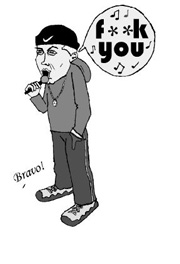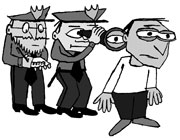A few months ago, members of my household came home with a dog from the shelter. Little did I suspect that this would be an entree into . . . (gasp) city politics.
As political controversies go, Kit (her name is short for Killer In Training, or Kitchen Dog, as she’s figured out where we store food) slobbers a lot. She is also, it would seem, rather benign, and exceedingly common; lots of people in Seattle own dogs.
Kit has been a marvelous addition to the house, a good companion, helpful security, steals the covers, keeps her easily amused humans well entertained, but she is not well suited as an urban dog. She needs to run, more than our limited backyard can accommodate. If she doesn’t get a good run in every two or three days she gets jumpy, pesky, and impossible to manage. But, amazingly, it turns out there are almost no decent places for a dog to run in the city of Seattle. There are, in a city of 550,000 (which probably includes at least 100,000 dogs) exactly seven off-leash areas in the entire city, most of which are poorly located, poorly maintained mudbaths (at least, they have been this winter). Seattle’s best, though not most convenient, is at Magnuson Park in Sand Point.
So, two or three times a week, we go trudging off to a city park to let Kit romp. It’s a very social occasion, because most dog owners are friendly about their common interest, and often habitual park users known each others’ dogs, their ages, breeds, tendencies, and maybe even something about the owners. It is, in short, exactly the sort of combination of practical need and social interaction that urban parks should be good for.
Which is how Kit, one of her owners, and several hundred other dogs and their humans wound up at a rainy but thickly attended political rally at Magnuson Park late last month.
Sand Point pooches
Off-leash areas, created by the City Council in 1995, have been political flash points. In this most recent instance, dog people, under the banner of the Magnuson Park Off- Leash Advocates Group, charge that one of Seattle’s infamous blue ribbon panels, set up to choose a plan for the redesign and expansion of Magnuson, intends to abolish the off-leash area entirely.
Magnuson’s off-leash area, created as a small pilot program in 1995, is the most heavily used part of the park. City Council member Nick Licata, who heads the committee with oversight for Seattle’s parks, attended the March 21 rally and says that abolition of the off-leash area has never been on the table, but that clearly some anti-doggists would prefer reducing its size and eliminating its present shoreline access.
It turns out the preferred landscape architectural vision of the Sand Point Citizens Liaison Committee places a heavy emphasis on environmental restoration. The conflict, in this case, seems to be between people who want to use the park and people who want it as a pretty thing to look at. The self-appointed citizens’ committee includes heavy hitters like Deputy Mayor Tom Byers, former Mayor Charles Royer, and former City Council member (and queen of Sand Point) Jeannette Williams. They know what’s best for us.
Sally Cope, chair of the Magnuson Park Off-Leash Advocates Group, is convinced the blue ribbon committee is stacked with anti-dog people. Licata says the Parks Department and the superintendent of parks are “not sympathetic” to the needs of dogs.
So here’s what will probably happen. The City Council, before making a final decision on the Magnuson plan, will be inundated with calls from dog owners, as well as opponents of off-leash areas. Cope’s group would like an expansion of the off-leash area, to include some shoreline and a level area for play (amazingly, the entire Seattle parks system has no adequate place to legally throw a Frisbee to a dog). The blue ribbon panel will most likely recommend loss of shore access and a smaller off-leash area. The City Council will end up compromising with something close to the current arrangement, but not before making a lot of people angry that they have to fight this battle.
All this seems very petty—we just started bombing Kosovo, and I’m writing a column on playing fetch with my dog—but it’s not. For many people, this sort of issue typifies the experience they have with government, municipal and otherwise, and it’s why so many people hate bureaucracies, governments, and politicians of all stripes.
As a dog owner, I want to know: why—when there are so many of us in the city, when the pilot program is by all accounts an unqualified success, when setting up a play area for dogs costs virtually nothing, takes up little space, is easy to maintain, is (contrary to what you might assume) negligible in its environmental impact, and is heavily used—why is it so difficult to get a basic parks need addressed? Why do I have to play politics? Why can’t I just play with my damn dog? Who represents the people who actually inhabit the city? That’s not an idle question, for dog owners or anyone else.






